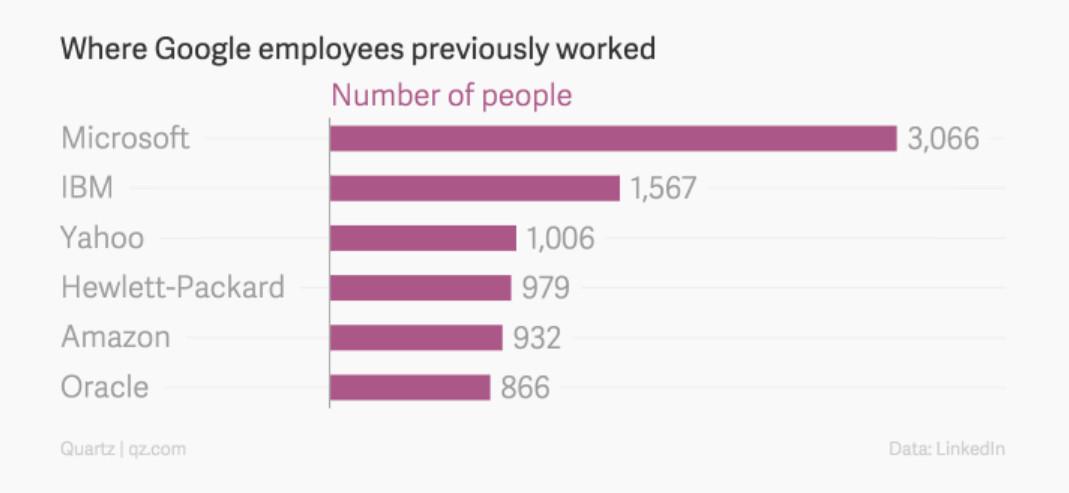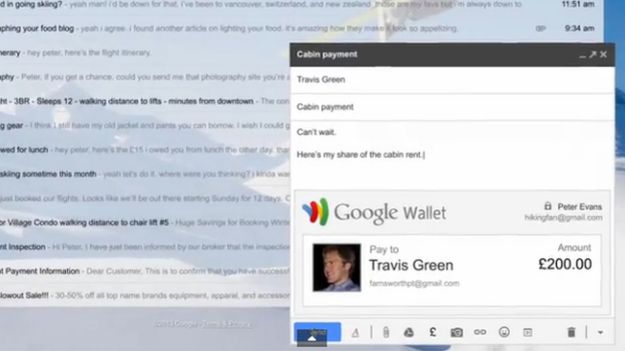Dear Google: what happened? Android sales are falling. Chrome has become a bloated hog. Analysts are calling you the new Microsoft, or, much worse, “the new Yahoo!”
And most damning of all: you have squandered our trust. You used to be
special, Google. Or at least we used to believe you were special. But
you seem more and more like just another megacorporation.
Does that sound harsh? Consider the Zoe Keating kerfuffle:
Consider “Google to shut down GTalk on February 16, will force users to switch to Hangouts“:
Remember the good old days, a decade ago, when everyone admired everything Google did? What happened?
…I believe I may have an answer or two to that question.
Google has long been a bizarre swan of a company. To the casual eye,
it’s a billion Android phones playing YouTube videos, its nonpareil
search engine, plus its Google X moonshots and miracles, robot dogs rescued from the military, SpaceX funding rounds,
etc, all cruising effortlessly along. Call that Awesome Google. But
under the waterline, a gargantuan advertising machine paddles
desperately, propelling Awesome Google towards its applause. Call that Mammon Google.
For all those analysts cavils, Mammon Google is still a colossal money-making machine, and both it and Awesome Google employ thousands of the smartest people alive (including — disclaimer/disclosure — multiple personal friends.) I fully expect Google to overcome the business challenges it faces…
…but I no longer expect to be particularly happy about this.
We’ve all been conditioned to see Awesome Google, but of late, Mammon Google seems harder and harder to ignore. Why is this? There seems to be no need for this. Mammon is still pouring money into Awesome. So what happened to the golden glory-days Google we knew and loved?
It’s true what Ben Thompson of Stratechery says: Google today is very reminiscent of Microsoft in the 90s. They too were the beneficiary of a seemingly endless, unassailable, firehose of money. But instead of spending that money on moonshots, Microsoft became a much-loathed corporate predator that wasted colossal amounts of time and money on infighting and horrors like Microsoft Bob and Windows Vista. Why has Google apparently taken a few steps down that cursed primrose path? Why is Mountain View in danger of becoming the new Redmond?
Why indeed. It turns out that Google is literally the new Microsoft:
(And we’re not just talking about low-level engineers here. Vic Gundotra, the former head of Google Plus, was a former Microsoft executive; which kind of explains a lot.)
This may help to explain why Google is, I believe, slowly but steadily losing our trust. Nowadays, when you interact with Google, you don’t know if you’ll be talking to Awesome Google; Mammon Google; …or a former Microsoftian whose beliefs and values were birthed in Redmond, and who, as a result, identifies a whole lot more with Mammon — and with bureaucratic infighting — than with Awesome.
Say what you like about Apple, and I can complain about them at length, you always know what to expect from them. (A gorgeous velvet glove enclosing an exquisitely sleek titanium fist.) But Google seems increasingly to have fragmented into a hydra with a hundred tone-deaf heads, each with its own distinct morality and personality. That wouldn’t matter so much if trust and awesomeness — “don’t be evil!” “moonshots!” — weren’t so intrinsic to the Google brand … which, to my mind, gets a little more tarnished every year.
Does that sound harsh? Consider the Zoe Keating kerfuffle:
YouTube gave Keating a take-it-or-leave contract, some terms of which were unacceptable to her. Some of the terms were also pretty hard to understand […] As YouTube now explains it — following a public debate following Keating’s blog post — Keating has a relatively simple choice […] These responses go against descriptions of the agreement presented to Keating (and transcribed by her) by YouTube previously, and presumably represent an update to the contract’s terms.At best, Google is guilty of incredibly confusing and heavy-handed communication, something they have long been (rightly) accused of. At best. But, as Jamie Zawinski put it:
This sounds like Google using the same strategy they used with Google Plus: instead of creating a new service and letting it compete on its own merits, they’re going to artificially prop it up by giving people no choice but to sign up for it. Except in this case the people being strong-armed are the copyright holders instead of the end users. (So far, that is! Wait for it.)Consider “Never trust a corporation to do a library’s job“:
As Google abandons its past, Internet archivists step in to save our collective memory … Google Groups is effectively dead … Google News Archives are dead … Projects that preserve the past for the public good aren’t really a big profit center. Old Google knew that, but didn’t seem to care […] The desire to preserve the past died along with 20% time, Google Labs, and the spirit of haphazard experimentation.…or, as VICE puts it: “Google, a Search Company, Has Made Its Internet Archive Impossible to Search.”
Consider “Google to shut down GTalk on February 16, will force users to switch to Hangouts“:
Remember the good old days, a decade ago, when everyone admired everything Google did? What happened?
…I believe I may have an answer or two to that question.
For all those analysts cavils, Mammon Google is still a colossal money-making machine, and both it and Awesome Google employ thousands of the smartest people alive (including — disclaimer/disclosure — multiple personal friends.) I fully expect Google to overcome the business challenges it faces…
…but I no longer expect to be particularly happy about this.
We’ve all been conditioned to see Awesome Google, but of late, Mammon Google seems harder and harder to ignore. Why is this? There seems to be no need for this. Mammon is still pouring money into Awesome. So what happened to the golden glory-days Google we knew and loved?
It’s true what Ben Thompson of Stratechery says: Google today is very reminiscent of Microsoft in the 90s. They too were the beneficiary of a seemingly endless, unassailable, firehose of money. But instead of spending that money on moonshots, Microsoft became a much-loathed corporate predator that wasted colossal amounts of time and money on infighting and horrors like Microsoft Bob and Windows Vista. Why has Google apparently taken a few steps down that cursed primrose path? Why is Mountain View in danger of becoming the new Redmond?
Why indeed. It turns out that Google is literally the new Microsoft:
(And we’re not just talking about low-level engineers here. Vic Gundotra, the former head of Google Plus, was a former Microsoft executive; which kind of explains a lot.)
This may help to explain why Google is, I believe, slowly but steadily losing our trust. Nowadays, when you interact with Google, you don’t know if you’ll be talking to Awesome Google; Mammon Google; …or a former Microsoftian whose beliefs and values were birthed in Redmond, and who, as a result, identifies a whole lot more with Mammon — and with bureaucratic infighting — than with Awesome.
Say what you like about Apple, and I can complain about them at length, you always know what to expect from them. (A gorgeous velvet glove enclosing an exquisitely sleek titanium fist.) But Google seems increasingly to have fragmented into a hydra with a hundred tone-deaf heads, each with its own distinct morality and personality. That wouldn’t matter so much if trust and awesomeness — “don’t be evil!” “moonshots!” — weren’t so intrinsic to the Google brand … which, to my mind, gets a little more tarnished every year.





 It's the social situation we all try
to avoid; forgetting to pay someone back because we don't have any
cash, or that card reader thingie, to do it online.
It's the social situation we all try
to avoid; forgetting to pay someone back because we don't have any
cash, or that card reader thingie, to do it online.